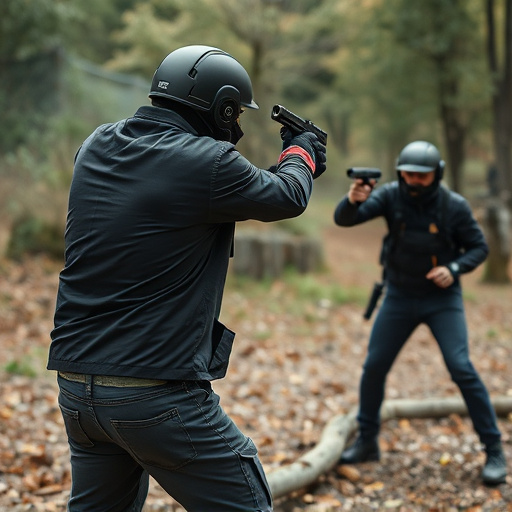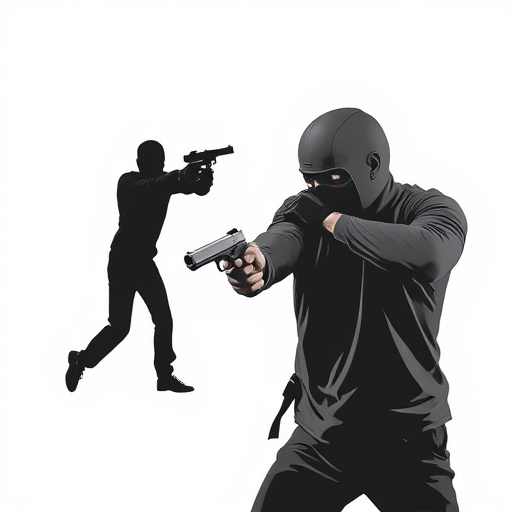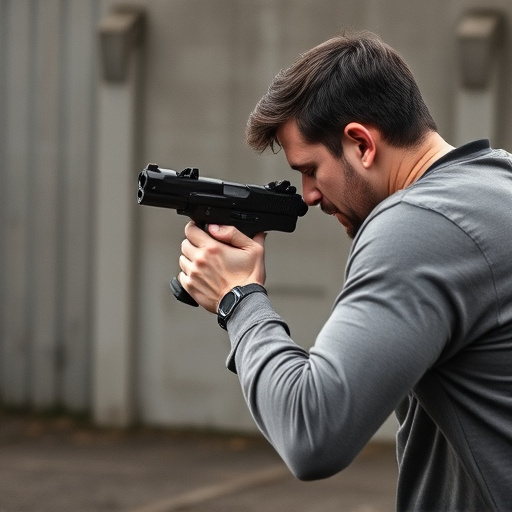Stun guns and tasers utilize high-voltage, low-current electrical pulses to disrupt nerve impulses, causing immediate effects like muscle spasms, disorientation, and temporary loss of consciousness. These devices temporarily paralyze muscles and overstimulate the nervous system, leading to incapacitation without permanent damage. While effective for personal defense, stun guns can cause short-term side effects including pain, blindness, and respiratory distress.
“In the realm of personal defense, stun weapons have emerged as game-changers. This article delves into the intricate differences between projectile and contact stun devices, focusing on their unique mechanisms and effects on the nervous system. While projectile weapons rely on speed and distance to disrupt neural pathways, contact stun devices utilize direct electrical impulses to overwhelm sensory inputs. Understanding these distinctions is vital for consumers looking to make informed decisions regarding self-defense options, specifically considering the impact on the body’s electrical systems.”
- Projectile Stun Weapons: Mechanism and Effects on the Nervous System
- Contact Stun Devices: Operation and Their Impact on the Body's Electrical Systems
Projectile Stun Weapons: Mechanism and Effects on the Nervous System

Projectile stun weapons, such as stun guns or tasers, operate by delivering an electrical current to the target’s body through a projectile equipped with electrodes. This mechanism disrupts the nervous system’s normal function, temporarily paralyzing muscles and causing neuromuscular disruption. The electric discharge interferes with the transmission of nerve impulses, resulting in a loss of balance, coordination, and muscular control.
The effects on the nervous system are immediate and intense. The stun weapon triggers a response similar to a strong shock, causing the target to experience muscle spasms, disorientation, and a temporary blackout. During this period, the individual may become non-responsive and lose consciousness for a brief moment. These weapons are designed to incapacitate individuals without causing permanent harm, making them popular choices for law enforcement and personal defense applications where temporarily neutralizing an assailant is crucial.
Contact Stun Devices: Operation and Their Impact on the Body's Electrical Systems

Contact stun devices, also known as stun guns or electroshock weapons, operate by delivering a strong electric current through the body’s surface to disrupt the nervous system and cause temporary incapacitation. When activated, these devices emit a high-voltage, low-current electrical pulse that interrupts the communication between the brain and muscles, resulting in muscle spasms, disorientation, and loss of balance. The impact on the body’s electrical systems is swift and powerful, affecting the nervous system at its core.
The stun gun effects on the nervous system can be significant, leading to a rapid response and profound physical reaction. The electric current disrupts the normal flow of nerve impulses, causing over-stimulation and paralysis of muscles. This disruption can last for several seconds, enough time for an individual to escape or disable an assailant. While stun guns are designed to cause temporary incapacitation without permanent harm, the intensity of the shock can lead to short-term effects such as pain, blindness, and even respiratory distress in some cases.
In comparing projectile and contact stun weapons, understanding their distinct mechanisms and effects on the nervous system is key. Projectile stun weapons, like tasers, utilize electrical pulses to disrupt muscle control, while contact stun devices directly apply an electric current to interrupt the body’s electrical systems. Both have proven effective in de-escalating potentially dangerous situations, but each operates through unique means that influence how they are deployed and their impact on the nervous system. By considering these differences, users can make informed decisions based on specific needs, ensuring the most appropriate stun weapon is chosen for safety and effectiveness.
